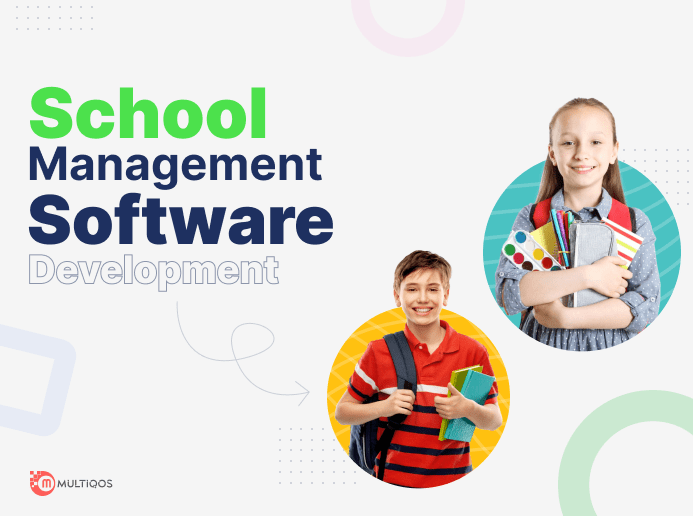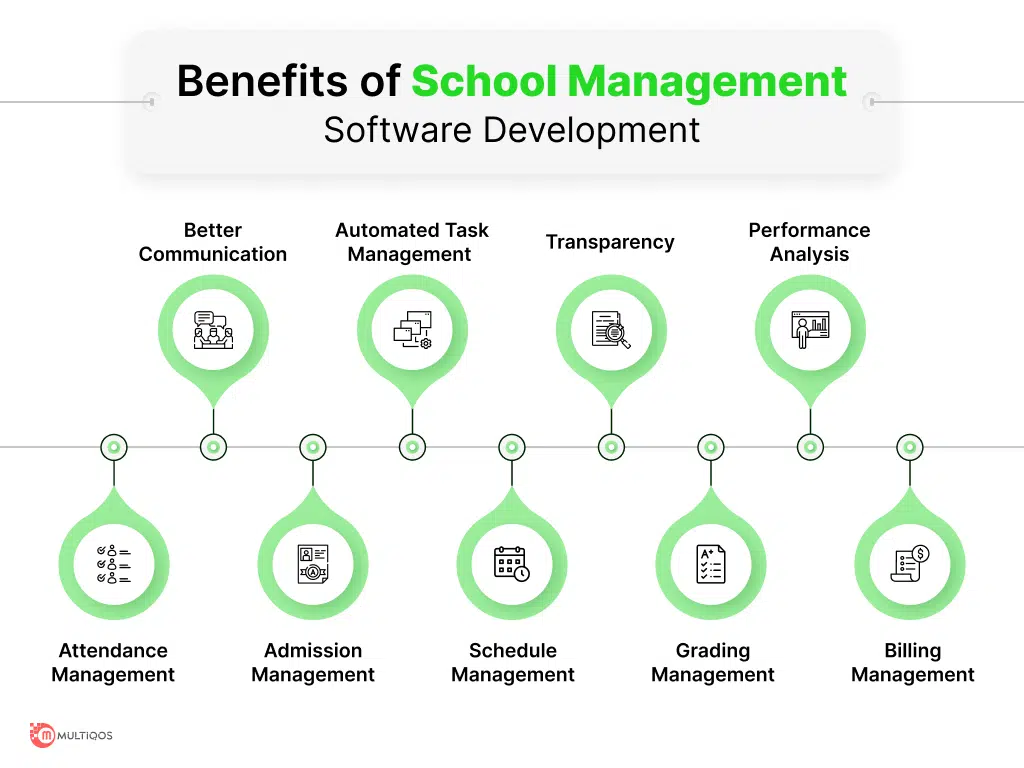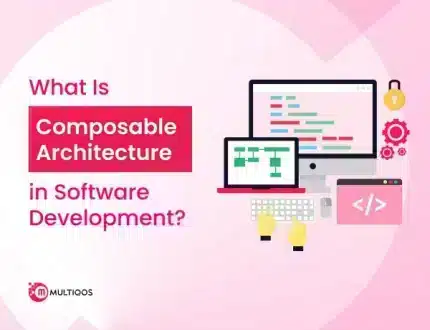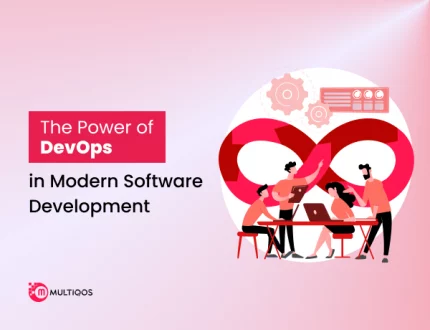How to Create a Thriving School Management System Software?

Introduction
Is running a school an easy endeavor? Obviously, not! The administration has a lot to handle because there are so many professors and so many kids. Software for school management systems can help with this. This program is intended to assist management with both short-term and long-term activities, as the name would imply. And the management of schools has been transformed by this software.
By the end of 2025, the US market for school management system software is anticipated to reach $8.5 billion. This just applies to the US market; the potential for the larger, more developed global market is two times greater. This demonstrates the market’s enormous potential.
However, as things stand, most educational institutions are still not familiar with this technology. This blog is to throw some light on that aspect and help school management to streamline their operations. So, let’s not waste any time and get started!
What Is a School Management System Software All About?
As the name suggests, these platforms are created to meet the many daily demands of school management. A school management software aids in both academic and administrative tasks related to running the institution. The school administration software has many more features that enable it to automate both basic and complicated operations.
Speaking of need, we cannot ignore how quickly technology is advancing in our modern environment. From the sectors we work into our personal lives, this has affected practically every aspect of our lives. The education sector hasn’t seen much change, though. This means that schools have remained mostly unchanged for the previous century or more.
However, school administration software is coming to alter this. This software streamlines many educational procedures in addition to making them simpler. Cost to hire software developers in 2025 is a key consideration as schools invest in customized solutions. This is why in the modern technological era, this software is more of a need than a luxury. With that said, let’s examine what the market has to say about these platforms.
School Management System Software: Trends and Statistics
Let’s look at some data before learning how to create software for school administration systems. By 2028, it is predicted that the market for school administration software would be worth $41B. By the end of 2025, 90% of all public schools will offer a mix of in-person and online training, according to Gartner.
Additionally, a CAGR of 13.5% is predicted for the market for school management systems by 2026. Increased digitalization in the education sector, a preference for e-learning, and a focus on raising educational standards are the key drivers of this expansion.
The numbers are quite interesting, aren’t they? Well, if you’re planning to build your own School Management System Software, now is the time to explore the available opportunities in the market and hire software developers to bring your idea to life.
Also Read: How Much Does School Management Software ERP Cost?
What Are the Different Types of School Management Software?
The industry of school management software has a wide range of alternatives. Let us look at them individually to help you decide which one would be your preference:
Free School Management Systems
- If you want to try out the operation of the school administration system, Classter is an excellent place to start. For K–12 schools and higher education institutions, this system offers several alternatives. Classter makes it simple to manage the learning process both in-person and online by providing modules like a student information system, registration, and data management for its customers. Additionally, it allows interaction with internet calendars and business programs, allowing teachers to manage student schedules and assignments.
- The feKara system links parents, instructors, and students on one platform. A virtual classroom may be set up thanks to its free version’s remarkable capability of integration with other video conferencing providers. Teachers and administrators may easily oversee the procedure through an application thanks to the school administration software.
Vendor-based Constructors
In essence, the suppliers of school registration and administration software offer both free and commercial versions. Vendors provide various modules and expert IT assistance to guarantee the system functions properly when you need to design software for school administration and you need a quicker option than the construction of a bespoke SMS. The following are a few of the most well-known vendor-based systems:
- One of the top school management systems, EDRP provides excellent capabilities for automating data management processes. It includes a user-friendly application that links students, parents, teachers, and administrative staff in a comfortable way. It also offers a range of chances for video conferencing and storage of student and instructor information.
- Shiksha365cloud offers a professional-level digital environment for educational procedures by utilizing AI and ML. One may design a comprehensive solution for educational institutions by choosing practically every conceivable component of the school administration system.
Customizable School Management Systems
You would better pick a unique system for school management if you want to create school management software that will be useful to you for decades. Actually, if they don’t have it, all university and school IT managers dream of having it. Compared to the previous two, it is far more practical and precisely suits the requirements of any educational organization. Such systems are often built from scratch for each customer by development firms offering custom software development services.
- Custom SMS has a wider range of capabilities, and adding new features to school software is always an option.
But Why Do You Need to Develop a School Management System Software?
To effectively manage all the school’s departments, staff, students, and courses, school management software, or ERP is required. Additionally, software for school management system may offer the management of the school a number of advantages as mentioned below:
-
Better Communication:
Schools invest in the creation of online school management system software because it improves communication between all parties involved in a school system, including students, instructors, parents, school staff, and school authorities.
-
Automated Task Management:
By automating them and helping you build AI agents, efficient school management system software simplifies a school’s challenging chores. Automation increases productivity and efficiency while lowering costs by freeing employees from repetitive tasks to focus on work requiring human interaction.
-
Transparency:
The transparency of the educational system is enhanced by a school management system. Parents may immediately review their kids’ report cards, check on their kids’ attendance, and view the instructors’ evaluations of their kids’ development. The degree of confidence between school administrators and parents’ administration is aided by more openness.
-
Performance Analysis:
The kids are able to evaluate their performance and identify their weak areas thanks to school management system software. Advanced analytical tools that evaluate student response sheets and provide them with a thorough grasp of their areas of weakness can be included in school management software. In order to increase student performance, teachers can also evaluate that performance.
-
Attendance Management:
The school’s management system enables it to keep track of each student’s attendance and make that information available to the general public. If the attendance numbers are not suitable, parents, instructors, and students may all verify the attendance and take the proper remedial action.
-
Admission Management:
Parents, kids, and administrators all find the process of enrolling in school to be laborious. The application procedure is difficult, time-consuming, and paper-intensive. As a result, in order to collect information on the parents and pupils, school officials do not need to email or send paper forms to them. In addition to receiving the electronic forms, the parents will also get reminders reminding them to submit the enrollment form on time and confirmations after it has been properly filed.
-
Schedule Management:
Schools still invest many hours in designing, updating, and notifying staff, students, and parents of crucial meetings and study schedules. An educational institution may handle meetings and schedules considerably more effective if it uses all-in-one software for school management systems with an automatic scheduling system. The school administration software’s timetable management tool will automate and streamline the scheduling procedure.
-
Grading Management:
By aiding in grading, a top-notch school management system may relieve teachers of some of their workload. The instructors can benefit from an excellent school management system software by grading more quickly; storing data readily; communicating grades simply; and increasing grading accuracy.
-
Billing Management:
Among the most crucial and delicate operations in every educational institution is fee processing. It is a delicate procedure since it involves private financial data and has an immediate effect on the institution’s bottom line. Parents may conveniently pay their children’s tuition online with a bespoke online school administration software program without going to the school.
Now that you know about the benefits of Developing School Management System Software, it is time to get going with the development procedure.
How to Develop School Management System Software?
Step #1: Developing the Idea
Getting a concept for your school management software is the first thing you should do before creating one. You should make decisions on the features, a number of sections, connection points for teachers and students, and other factors.
For instance, there should be two distinct portals for students and instructors if you want teachers to offer assignments to students. Similar to that, there should be a function if you want to handle your instructors’ payroll. As a result, you should make a list of all the features you’ll require and how they’ll be related.
Step #2: Choosing the Technology
The choice of technology comes next. The technology is wholly dependent on the platform on which the software is being developed. For instance, if you are creating it for the web, you can use JavaScript or Python as the technology.
Similar to that, you will need to employ Android and other mobile app development technologies if you are creating it for mobile devices. Even if you want to create software for many platforms, you will still need to employ a variety of technologies. A cross-platform technology like Flutter is another option.
Step #3: Developing the App
The next stage is to create a school administration system once you have decided which technologies you will employ. It won’t be difficult to construct school administration software if you are an experienced developer. You may start constructing it using your preferred programming language. If you’re not a developer, you do, however, have two choices. You can work with a software development company or a developer.
A freelance developer may handle smaller tasks and is less expensive than a company. However, working with a software company is the ideal option if you need to establish a big system since they can assist you with both software creation and maintenance, which is something we don’t receive from freelance developers.
Additionally, you can choose ready-made school administration software if you want to save costs. These kinds of programs sometimes need a monthly or yearly membership. They can therefore be costly in the long run. Additionally, you frequently do not obtain the things you desire.
Step #4: Implementing the Software
Implementing your management software is the last stage. You’ll need to invest in a web server to store all the data for this. But if you’re working with a software company or developer, they’ll take care of this for you. You must also write lessons on how to utilize the platform after your website is finished and also provide instructors, students, and school personnel with user logins.
MultiQoS Expertise in School Management Software
Any country’s future is in its students, and a good school administration system may contribute to a promising future. As a leading educational app development company, we can assist your school in maximizing efficiency and fostering long-term operation for both pupils and employees.
At MultiQoS, we are familiar with the dynamics of mobile e-learning apps and can assist you in creating a strong app for school management. Our skilled software developers can assist you if you wish to create unique school administration software.
Conclusion
The only option for educational institutions to meet the need for high educational standards and comprehensive process organization is to understand how to create and extensively deploy school management system software and for that, it’s essential to hire full stack developers with the right expertise.
School management systems have already been making it much simpler to handle more pupils in one process, and they will eventually serve as the foundation for the whole transformation of the education sector. These are the drivers that we most certainly neglected over the past couple of decades: proactive use of AI and ML in e-learning, building sizable databases with all the learning resources, quick feedback processing, quick tests, and fast polls.
Want to Build Your Elearning App?
Discuss Your Project Requirements with Our Specialists.
FAQ on School Management Software Development
A customizable school management system that can be readily changed whenever necessary is essential when it comes to school management solutions since it satisfies all criteria at every stage of a learning institution’s lifecycle. Additionally, it supports all workflows, which streamlines a lot of procedures and gives students and teachers tools that are specifically designed for them.
On an average, creating a enterprise resource planning software for school management can cost between $10,000 and $50,000.
Get In Touch





